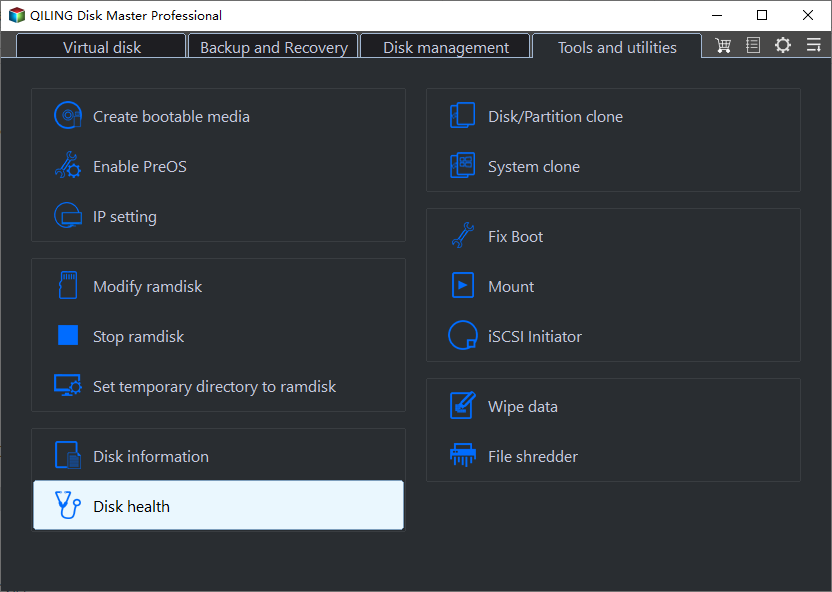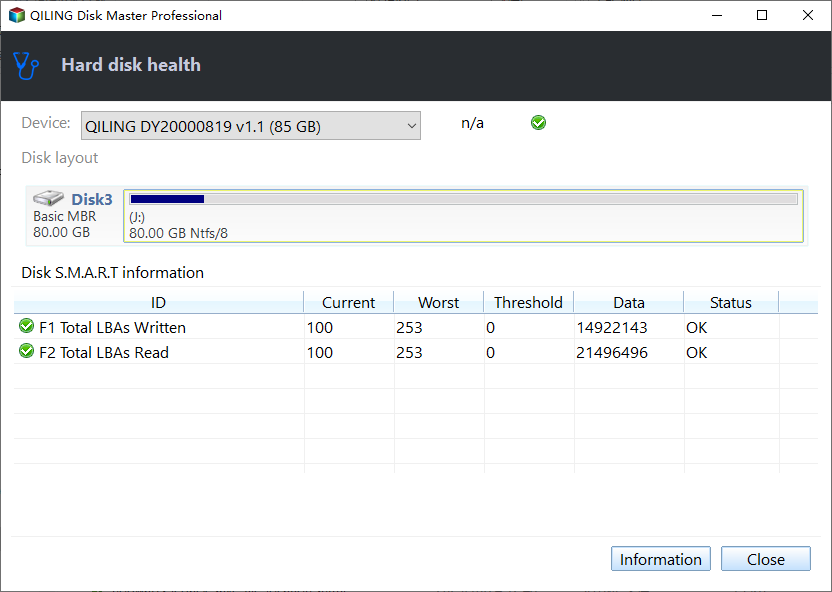How to Check NVMe Temperature in Windows 10/11 [100% Working Solutions]
Follow the two working solutions to check NVMe temperature in Windows 10/11 easily and quickly!
| Workable Solutions | Step-by-step Troubleshooting |
|---|---|
| Check SSD Temperature in Windows 10/11 - Qiling Disk Master | Step 1. Launch Qiling Disk Master and click the blue arrow to activate the "Disk Health" feature under the "Discovery" section...Full steps |
| Check SSD Temperature in Windows 10/11 - Manage Disks and Volumes | Step 1. Select Start > Settings > System > Storage from the menu...Full steps |
Is the temperature of the NVMe too high? Do you wish to know how to check NVMe temperature in Windows 10? You have reached the correct page. First, let's examine why checking the NVMe temperature in Windows 10/11 is necessary.
Why Do I Need to Check NVMe Temperature in Windows 10/11
If your PC's components overheat, your system may suffer catastrophic harm. In addition to diminished performance and frequent Blue Screen of Death (BSOD) issues, continued overheating can cause irreparable damage to these components. You must therefore monitor their temperature regularly. According to some reports, temperatures between 0 and 70 degrees Celsius are suitable for NVMe's optimal performance. Any temperature beyond the temperature limit may damage the performance of NVMe.
However, Windows 10 did not have a monitoring capability by default, leaving just BIOS and third-party applications as choices. In Windows 10 builds 20226 and later, the SSD Temperature can be accessed through Storage Settings. This feature examines NVMe SSDs for any irregularities. In this post, you'll discover two strategies to address this issue.
How to Check NVMe Temperature in Windows 10/11
This section provides two methods for determining the SSD temperature, from which you can pick based on your Windows version and other requirements. But Manage Disks and Volumes is a brand-new option for Windows 10 Insider builds 20226 and later. To ensure success, you should use Qiling Disk Master.
Now, let's examine how to use it to check the hard drive's temperature.
Solution 1. Check SSD Temperature in Windows 10/11 - Qiling Disk Master
Qiling Disk Master is a professional NVMe SSD health-checking application. Its "Disk Health" feature can clearly show you the temperature, status, and other data with one click. In addition, it is compatible with all Windows versions, and thus compatibility concerns are unnecessary. Its intuitive UI makes it simpler to use.
Download this tool and follow the instructions to determine your SSD's temperature.
Step 1. Launch Qiling Disk Master and click the blue arrow to activate the "Disk Health" feature under the "Tools and utilities" tab page.

Step 2. Select the target disk and click the "Refresh" button. Then, you can see the health condition of your disk.

Now, you can easily observe the temperature of your SSD. As a professional tool, Qiling can more than determine the SSD's temperature and learn more about its characteristics. Let's take a look at other features of Qiling Disk Master:
- Check SSD health in Windows
- Format NVMe SSD
- Clone Windows to NVMe
- Split or merge partitions on SSD
- Resize partition on SSD
Downloading Qiling Disk Master might help you manage your SSD more effectively. Try it out now.
Solution 2. Check SSD Temperature in Windows 10/11 - Manage Disks and Volumes
Microsoft added a new storage capability, Manage Disks and Volumes, in Windows 10 Build 20226. The ability to check the temperature of an SSD is one of the new capabilities. Listed below are the steps:
Step 1. Select Start > Settings > System > Storage from the menu.
Step 2. Click Manage Disks and Volumes at the bottom of the page.

Step 3. Click the hard drive whose temperature you wish to view, and then click Properties.
Step 4. Your current temperature can be found under Drive health.

After completing the procedures, you will have an idea of the storage device's current temperature, which is essential information you may use to troubleshoot issues or reconsider the cooling system for the device.
If you do not see the temperature details, it is possible that you do not have a supported drive (currently, only NVMe SSDs are supported) or that you need to run a version of Windows 10 with the drive health feature.
Conclusion
This article discusses two methods to check NVMe's temperature in Windows 10/11. The temperature and health monitoring functions integrated into Windows 10 are only compatible with internal SSD, so you cannot monitor the health of external drives such as flash drives or memory cards. Consequently, you may utilize the effective software Qiling Disk Master. This application can display the designated hard drive's current temperature and status. It is simple to use, and the action may be completed in two steps.
You May Also Like:
FAQs About How to Check NVMe Temperature in Windows 10/11
If you have further questions about How to Check NVMe Temperature in Windows 10, here are some frequently asked questions below to clarify your confusion.
1. How do I check the temperature of my NVME Drive?
Follow the steps below to try Windows built-in tool to check the NVMe temperature.
Step 1. Open the Windows 10 Settings menu and select Storage under the System.
Step 2. Under " More storage settings," select the Manage Disks and Volumes option.
Step 3. Select the drive whose temperature you wish to know.
Step 4. Select the Properties menu item.
Step 5. Verify the temperature of the hard disc under the "Drive health" column.
2. What temperature is NVMe SSD?
An NVMe SSD's operational temperature range is generally between 0 and 70 degrees Celsius (32 and 158 degrees Fahrenheit). Keep the SSD within this temperature range to ensure optimal performance and longevity.
3. Does NVMe SSD overheat?
NVMe solid-state drives (SSDs) are known for their lightning-fast performance. They're four times faster than Serial ATA (SATA) drives! As a result, they are susceptible to overheating, mainly when put in systems with limited ventilation.
Related Articles
- [How-to] Format Disk from MBR to GPT with DiskPart in Windows 10
- Partition Magic Server 2003 Free Download for Windows Server 2003 [How-To Guide]
- Nintendo Switch Not Reading SD Card? 10 Fixes Here!
- Partition Magic VS Qiling Disk Master, Which Is Better & How to Select